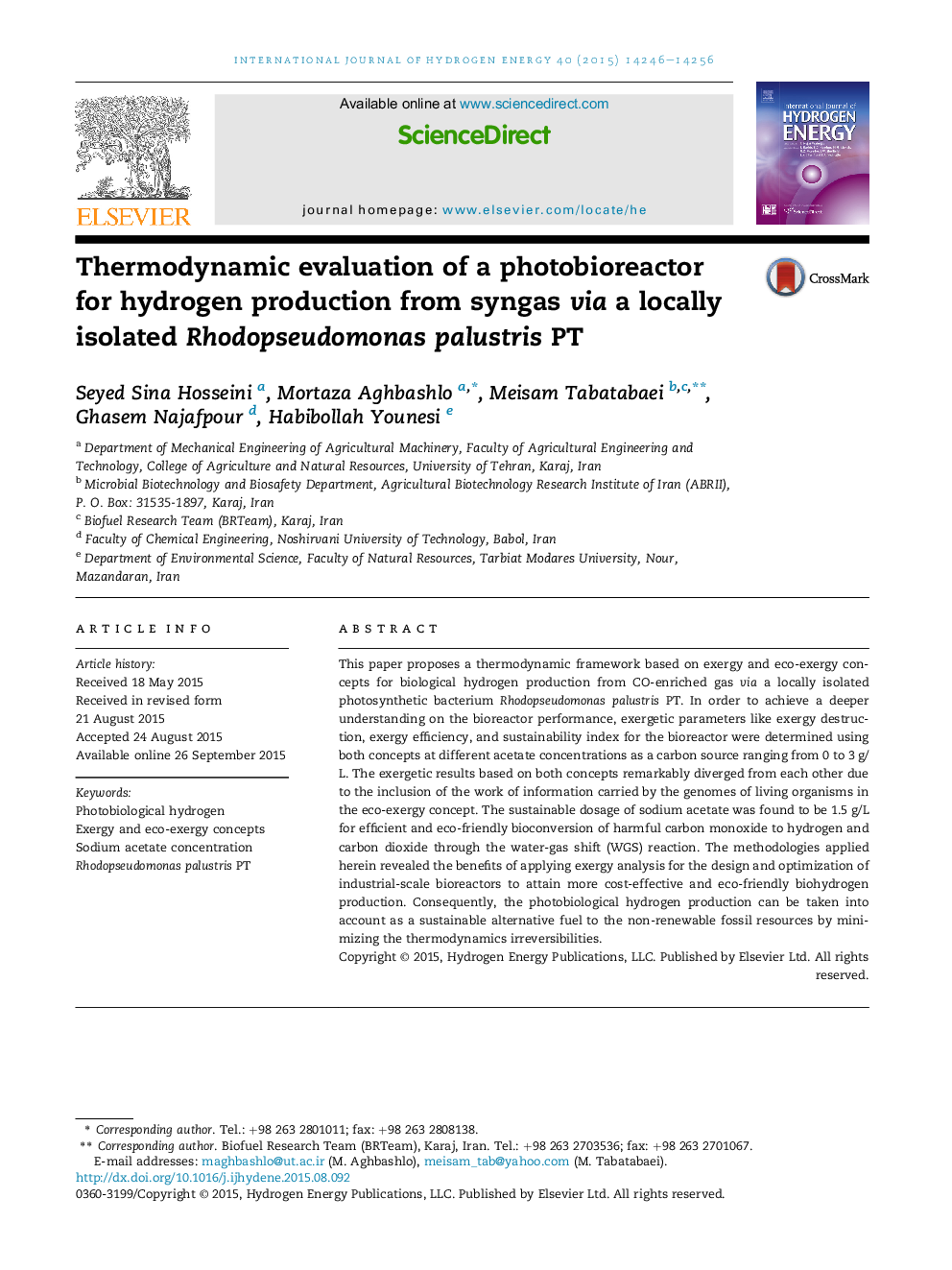| Article ID | Journal | Published Year | Pages | File Type |
|---|---|---|---|---|
| 1269152 | International Journal of Hydrogen Energy | 2015 | 11 Pages |
•Application of exergy and eco-exergy concepts for photobiological hydrogen production.•Comparing conventional exergy and eco-exergy based analyses at various sodium acetate concentrations.•Profound difference in the exergetic performance parameters of bioreactor using both concepts.•1.5 g/L sodium acetate concentration as the best dosage for efficient and eco-friendly biohydrogen production.
This paper proposes a thermodynamic framework based on exergy and eco-exergy concepts for biological hydrogen production from CO-enriched gas via a locally isolated photosynthetic bacterium Rhodopseudomonas palustris PT. In order to achieve a deeper understanding on the bioreactor performance, exergetic parameters like exergy destruction, exergy efficiency, and sustainability index for the bioreactor were determined using both concepts at different acetate concentrations as a carbon source ranging from 0 to 3 g/L. The exergetic results based on both concepts remarkably diverged from each other due to the inclusion of the work of information carried by the genomes of living organisms in the eco-exergy concept. The sustainable dosage of sodium acetate was found to be 1.5 g/L for efficient and eco-friendly bioconversion of harmful carbon monoxide to hydrogen and carbon dioxide through the water-gas shift (WGS) reaction. The methodologies applied herein revealed the benefits of applying exergy analysis for the design and optimization of industrial-scale bioreactors to attain more cost-effective and eco-friendly biohydrogen production. Consequently, the photobiological hydrogen production can be taken into account as a sustainable alternative fuel to the non-renewable fossil resources by minimizing the thermodynamics irreversibilities.
